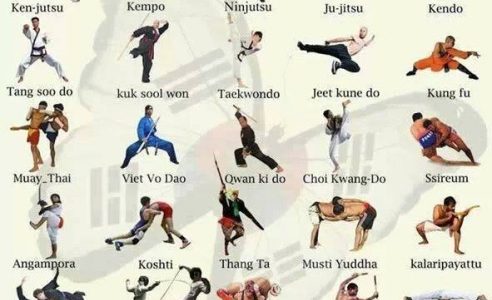Just How Flexibility Changes Martial Arts Training. Boost Your Method, Avoid Injuries, And Master Advanced Relocations With This Game-Changing Adaptability Guide
Just How Flexibility Changes Martial Arts Training. Boost Your Method, Avoid Injuries, And Master Advanced Relocations With This Game-Changing Adaptability Guide
Blog Article
Personnel Author-Young Hodge
Did you know that flexibility plays an essential function in fighting styles training?
Actually, a research study performed by the International Journal of Sports Physical Therapy revealed that over 80% of martial musicians deal with restricted adaptability.
Yet why is versatility so essential? Well, it not just enhances your performance and strategy yet also lowers the threat of injuries.
So, if preschool martial arts near me wanting to take your fighting styles skills to the following degree and stay injury-free, you'll certainly intend to maintain reading.
Advantages of Flexibility in Martial Arts
Flexibility in fighting styles brings various advantages to experts, allowing you to improve your efficiency and decrease the danger of injury. By boosting your adaptability, you increase your range of movement, allowing you to perform techniques with higher precision and effectiveness.
This improved agility and fluidness in your activities can give you a competitive edge, allowing you to react quicker and adapt to various scenarios during competing or competitors. Additionally, increased adaptability assists to prevent injuries by improving muscle mass flexibility and joint mobility.
It permits your body to relocate much more openly, decreasing the stress on your muscles and ligaments. This, consequently, lessens the possibilities of strains, strains, and muscle mass pulls. By incorporating versatility training right into your fighting styles practice, you not just boost your efficiency but also protect your physical well-being.
Methods to Improve Flexibility
To enhance your versatility in martial arts, you can include different stretching workouts into your training routine.
One reliable method is vibrant extending, which involves relocating via a full series of activity to warm up your muscle mass and raise versatility. Instances consist of leg swings, arm circles, and trunk turnings.
One more technique is fixed stretching, where you hold a stretch for a continual time period. This aids extend and relax your muscle mass, enhancing flexibility in time. Typical static stretches for fighting styles include the butterfly stretch, hamstring muscle stretch, and shoulder stretch.
In addition, including yoga or Pilates right into your training can also substantially boost your adaptability.
Remember to always heat up before stretching and listen to your body to prevent injury.
Adaptability Training for All Ability Levels
As you advance in your fighting styles training, boosting your versatility comes to be vital for boosting your overall efficiency. Flexibility training isn't only helpful for sophisticated specialists but also for beginners and intermediate pupils.
No matter your skill degree, including flexibility workouts right into your training regimen will assist you create a variety of movement, stop injuries, and enhance your method implementation.
For adult kick boxing , versatility training can assist improve your form and posture, permitting you to do activities correctly and effectively. Intermediate professionals can utilize flexibility training to further raise their range of movement and enhance their fluidness in implementing complicated strategies. importance of martial arts can benefit from adaptability training by maintaining and improving their existing versatility, allowing them to execute advanced actions effortlessly.
Conclusion
To conclude, embracing versatility in your fighting styles training is critical. By integrating strategies to boost versatility, you can enhance your efficiency and protect against injuries.
Keep in mind, 'A flexible body is a resilient body.' So, keep pushing your restrictions, stretching regularly, and profit of a supple and active figure.
